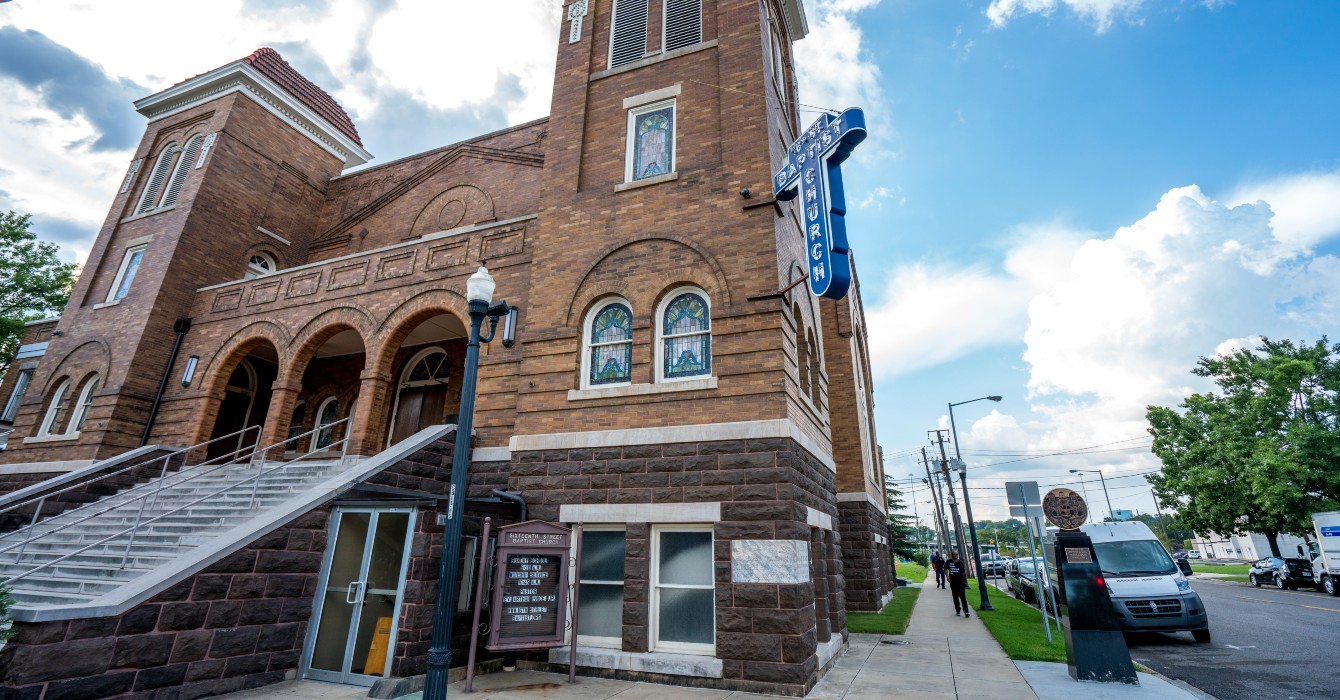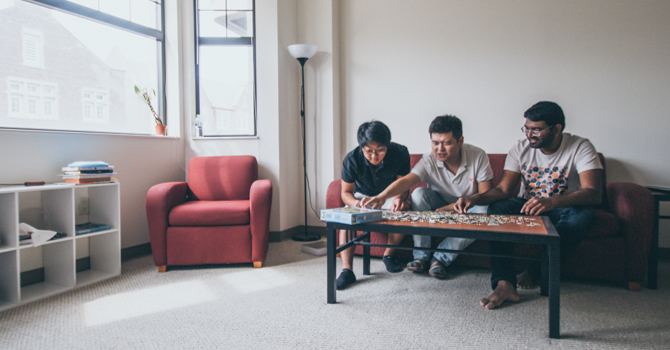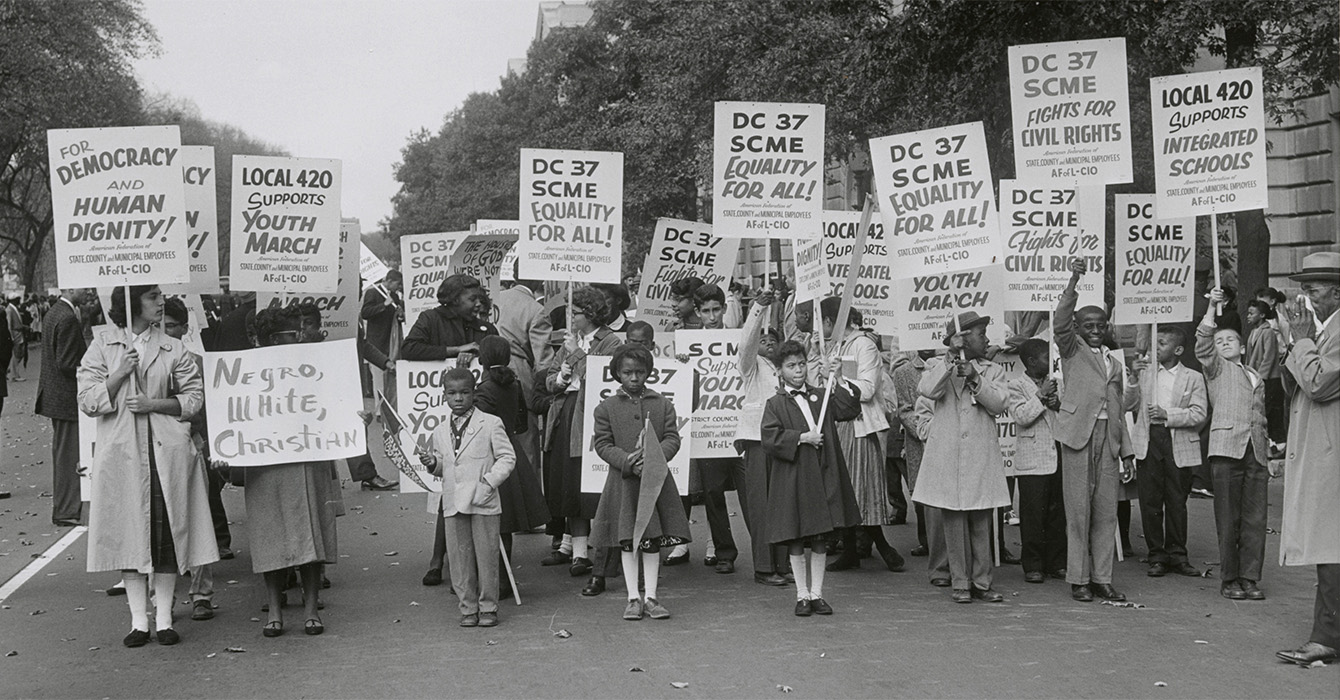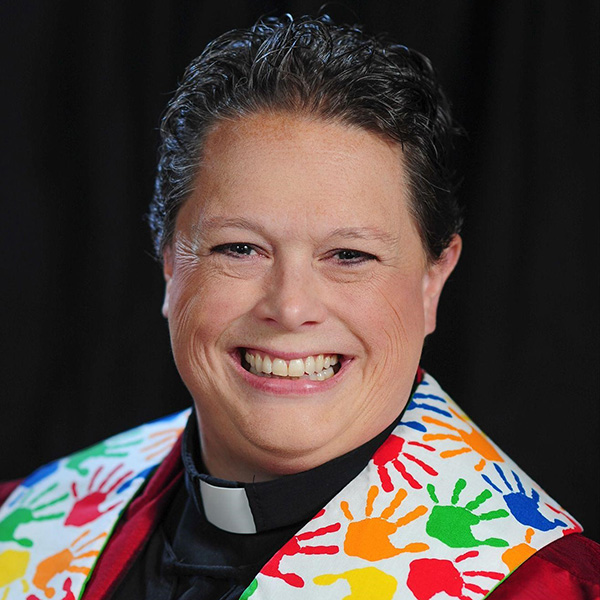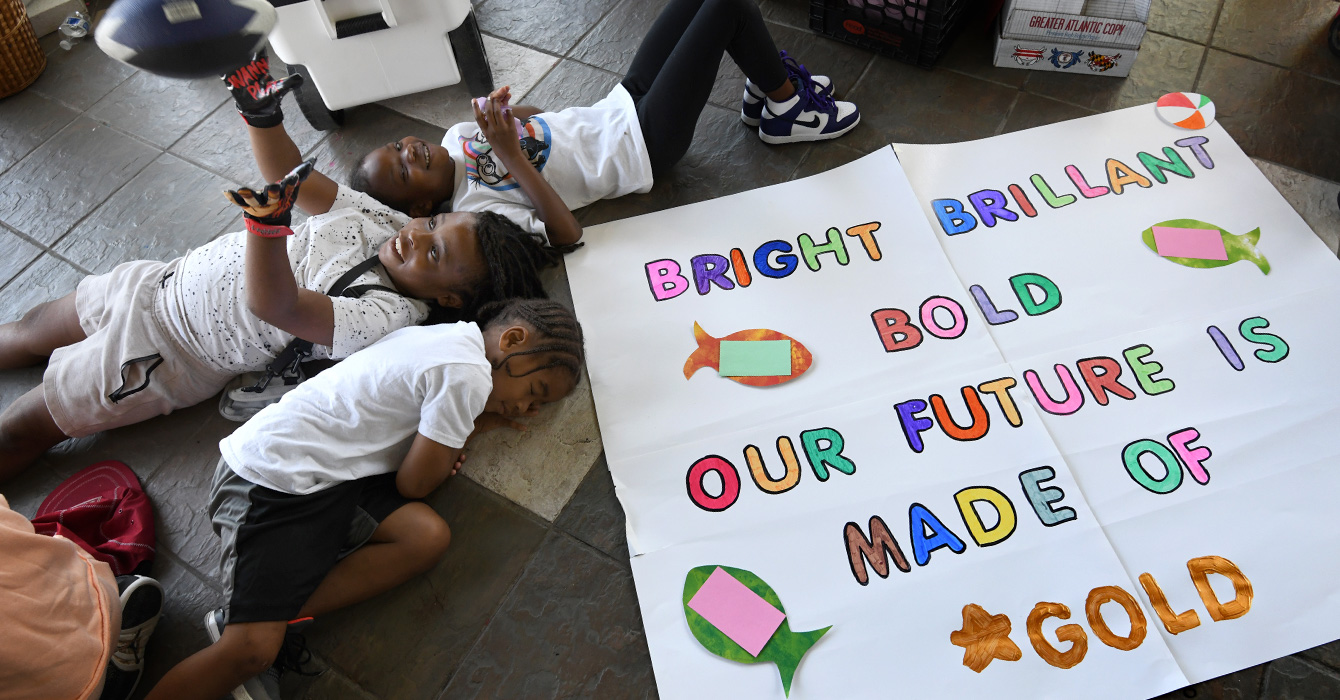In 1993, the Jesuits in Chicago wanted to expand their presence in two neighborhoods long plagued by poverty and gang violence, Pilsen and Little Village. Home to successive waves of immigrants -- first Germans and Irish, then Czechs and other Eastern Europeans -- the neighborhoods have been predominately Mexican-American since the 1960s.
When the Jesuits went door-to-door surveying the area, they found that parents craved good schools for their children. More than anything, they wanted a college preparatory school that would succeed where the local public schools were failing.
So three years later, in a community where most students never graduate, the Jesuits launched Cristo Rey Jesuit High School, a demanding college prep academy. In an era when many Catholic schools struggle to stay open, few would have been surprised if Cristo Rey had quickly shuttered.
Instead, Cristo Rey has thrived. Since opening in 1996, the school has not only sent thousands of students to college; it has also created an innovative and financially sustainable model of Catholic education that is being replicated across the nation. Cristo Rey Jesuit High School was the cornerstone of what would become the Cristo Rey Network, an association of 24 schools that provides a quality Catholic education to young people in urban communities with limited educational opportunities.
Questions to consider
Questions to consider:
- Cristo Rey is about a mission rooted in faith, about helping people for sacred reasons. How does your organization keep sacredness and faith at the core of its mission? How does it keep that link vital for staff and others?
- How could you apply the Jesuits' model of listening deeply to people to learn about the needs and wants of those whom you serve?
- What big problem in your church, organization or community do you assume has no solution? How could you solve it anyway?
- Cristo Rey is an example of networking. How do you ensure that your network includes new perspectives and people?
Today, 6,900 students, mostly Hispanic and African-American, are enrolled in Cristo Rey Network schools in 17 states and the District of Columbia.
How successful are they?
Last year, every member of the Cristo Rey class of 2011 nationwide was accepted into a two- or four-year college. For the classes of 2008 through 2010, 85 percent enrolled in college, far above the matriculation rate for all high school students nationally, and more than twice the rate for African-American and Hispanic students. After two years, almost all -- 88 percent -- are still in school. They don’t drop out.
The key to Cristo Rey’s success is a work-study initiative pioneered at that first Cristo Rey school. Under the program, students work at paid internships five days a month in law firms, banks, hospitals and other professional settings. The internships not only introduce students to the workplace; they generate revenue -- currently about $32 million a year -- that covers the majority of the students’ education.
“If the [work-study program] just helped the schools be more financially sustainable, then it would be a success,” said Chris Tessone, the director of finance at the Thomas B. Fordham Institute, an educational think tank that employs two students from Don Bosco Cristo Rey High School in Washington, D.C. “But it also furthers the schools’ mission.”
Six bullets
Cristo Rey was built for young people like Andy Laureano. Now 23, he remembers gang violence as a fact of life growing up in Little Village.
“There was a drive-by [shooting] on our street,” he recalled. “Six bullets penetrated our house. I remember cops beating up gangbangers in front of the house.”
Longing to escape the neighborhood, Laureano saw education as a path out. As a middle schooler, he attended science classes on Saturdays at the University of Illinois-Chicago, in part just to be somewhere else.
“You have to get away,” he said.
After graduating from Cristo Rey Jesuit in 2006, Laureano did get away, earning a scholarship from the University of San Francisco and graduating with a degree in English. Today, he works for the Cristo Rey Network and is considering a career in education.
“Cristo Rey was life-changing for me,” he said.
Getting to the point where Cristo Rey could deliver that kind of transformative education was no easy journey, said Robert Birdsell, the president and CEO of the Cristo Rey Network. In the beginning, the biggest obstacle was simply figuring out how to fund a Catholic high school and keep it going.
“Sustainability is a huge issue for Catholic schools,” Birdsell said. “Half of Catholic schools have closed over the past 50 years.”
As the number of priests and nuns has declined nationwide, parochial schools have lost the inexpensive labor they once provided and have had to cope with skyrocketing personnel and other costs. For those who were planning the first Cristo Rey, the financial challenges were even greater. The parents of their target students -- almost three-quarters of Cristo Rey Network freshmen qualify for free or reduced-price lunches -- could not afford the tuition necessary to keep a top-notch high school in operation.
Father Foley comes home
Enter the Rev. John Foley, SJ. After 34 years in Peru, working primarily in education with the poor, Foley was invited to return to his hometown of Chicago in 1995 to lead the team that was launching the new school.
“I think any reasonable person would have been intimidated,” said Foley, who served as the founding president of both Cristo Rey Jesuit and the Cristo Rey Network and is now chair emeritus and chief mission officer. “I think it helped that I was totally new to the scene.”
Knowing that he didn’t have all the answers, Foley and his team began networking, meeting with anybody who might be able to help with money, sweat equity or a good idea. One such meeting was with Rick Murray, a real estate investor who had helped the Jesuits with financial ideas in the past.
Murray, who became a consultant to the project, suggested that the school have its students work in paid internships to help defray costs.
“He didn’t know it at the time, nor did we, but it was the key to the whole project,” Foley said.
The work-study program became the financial engine that enabled the first Cristo Rey school to open its doors and later powered the expansion of the program nationwide.
Cristo Rey Jesuit High School was a proving ground for the work-study approach. Today, four students share a single internship, with each student working about five days a month. Together, the four students generate about $25,000 annually to defray tuition.
Before they begin working, students attend a three-week “boot camp,” as Birdsell calls it. They learn about everything from dress codes and Microsoft Office to how to use an elevator and a revolving door. Once the internships begin, the students typically meet at the school and ride a van to their workplaces to ensure that they are on time.
Separately, the internship and Cristo Rey’s academics are demanding. Together, they can be grueling, especially for 14-year-old freshmen, many of whom enter Cristo Rey schools two or three grade levels behind, Birdsell said. As the students are being introduced to the business world, they are also being exposed for the first time to a challenging curriculum and high faculty expectations.
“I’ll see a kid who’s tired, and he’ll say, ‘I’ve been in meetings all day,’” Birdsell said. “Add to that, the academics are rigorous: two to three hours of homework a night. If you’ve never done homework before, that’s a shock.”
Blue-chip partners
More than 1,500 partner businesses provide the internships for Cristo Rey, including such blue-chip names as Blue Cross Blue Shield, Deloitte, JPMorgan Chase, Raytheon and Wells Fargo. The companies tend to be thoroughly satisfied with the students, with 93 percent re-enlisting for the program each year. When businesses do pull out, it’s usually not because they’re dissatisfied but because they have moved, been sold or gone out of business.
O’Keefe, Lyons & Hynes, a Chicago tax and corporate law firm, has participated in the Cristo Rey work-study program from the beginning and currently employs eight Cristo Rey students.
“The moment I heard the concept, I was all for it,” said Mike Heaton, a partner at the firm.
Heaton said he never worried that the kids from Pilsen and Little Village could do the work. He had seen his own teenage children and those of his partners do the same jobs as summer interns.
“Having our own kids down here convinced us that the kids of Cristo Rey could come in and do the job,” he said.
The law firm doesn’t consider the internships a charitable contribution to Cristo Rey, Heaton said. The students actually solve a big problem for the firm. In today’s workplace, answering phones, filing and making copies is difficult work that most adults don’t want to do.
But when four students share the job, it becomes a learning experience for them, he said.
In many instances, interns move up to roles with additional responsibility, such as doing research. One former Cristo Rey student, Cristina Garcia, a graduate of Marquette University, is currently working at the firm for a few months before starting law school in the fall.
“They do good work,” Heaton said.
The students, though, aren’t the only ones who learn from the work-study program. As Pilsen teens and downtown corporate lawyers get to know each other, eyes are opened, attitudes changed.
“It goes both ways,” Heaton said. “There’s no doubt these students have changed the perceptions of some of our staff and the lawyers. At the same time, we see the students change and become more relaxed and confident by the time they’re juniors and seniors. When they first arrive, they’re shy and perhaps wondering what kind of ogres we might be.”
The network is launched
Cristo Rey Jesuit and its work-study program were so successful that within a few years groups from other cities were approaching Foley about how to replicate the school. After receiving a $12 million pledge in 2000 from B.J. Cassin, a venture capitalist, Foley was ready to expand the program. In 2001 he launched the Cristo Rey Network.
Two years later, Cristo Rey schools were operating in Los Angeles, Portland and Denver, and the Bill & Melinda Gates Foundation contributed another $9.9 million to speed the growth of the network.
With such high-powered backing, the network has spread across the country. Typically, new schools receive $500,000 to $1 million in seed money from the Cristo Rey Network to get started. Local backers use the money and Cristo Rey’s proven record of success to attract more local donors to fund the school until the work-study program can cover most of the school’s operating expenses. Of the 24 Cristo Rey schools, 20, including the original Cristo Rey, were new starts and four were converted from existing Catholic schools.
But perhaps the most important resource local Cristo Rey groups get from the Cristo Rey Network is the template forged at Cristo Rey Jesuit in Chicago. The first Cristo Rey high school learned a lot about how to make the work-study program succeed for the students and for the school, and it shares that knowledge with network members. Additionally, the network requires all Cristo Rey schools to meet 10 “mission effectiveness standards,” including being “explicitly Catholic in mission,” being financially sound and serving only economically disadvantaged students.
One of the most innovative aspects of the Cristo Rey Network has been the way it has worked across various traditions in the Catholic Church and not exclusively with any single religious order, Foley said.
A new twist
“We have religious groups talking to each other, talking about what’s the best way to educate the students,” Foley said. “That’s unheard of. The priests and nuns are talking, and they’re talking to brothers. That’s a new twist.”
Although the first school was started by the Jesuits, other schools are sponsored by a variety of Catholic orders and institutions, including Sisters of Charity, Sisters of Mercy, Dominicans, Marist Brothers of the Schools and several archdioceses.
Cristo Rey Boston High School, formerly North Cambridge (Mass.) Catholic High School, is operated by the Archdiocese of Boston. Sister Ellen Powers, CSJ, who was principal when the school joined Cristo Rey in 2004, said networking helped ensure the school’s transition.
“We were helped by the experiences of the other Cristo Rey schools, and we learned from their pitfalls,” Powers said. “In one respect, you can learn from each other. But in other respects, you’re on your own.”
In its decade of opening schools, the Cristo Rey Network has had only one school close. That school was launched in 2007 in Omaha, Neb., just a year before the recession hit and was able to generate only a fraction of the revenue that other network schools do.
Despite that setback, the Cristo Rey movement continues to expand around the nation. In 2008, the network launched a second school in Chicago, opening Christ the King Jesuit College Preparatory High School in Austin, a predominantly African-American neighborhood on the far West Side.
Patterning itself after that first Cristo Rey school, Christ the King provides the same opportunities to African-American students as Cristo Rey Jesuit provides to Mexican-Americans.
Like their counterparts a few miles away, Christ the King students are challenged with a rigorous curriculum.
‘Greatest school on the West Side’
“I was not prepared for the work I was doing as a freshman,” said Larry Carr, 18, now a senior. “I felt like I was behind. I couldn’t keep up with the pace at first.”
But with hard work -- both his and his teachers’ -- Carr caught up and then some. After graduation this spring, he hopes to study architecture at the Illinois Institute of Technology.
“If anyone asks, I tell them this is the greatest school on the West Side,” Carr said.
Foley agrees. He has seen the value of investing in young people and the transformative changes that Cristo Rey can make in their lives. He knows the possibilities of the Cristo Rey movement.
Sixteen years after the first Cristo Rey opened, the movement is still just getting started. This fall, the 25th Cristo Rey school will open in Philadelphia, and another four schools are in development. By 2020, the network hopes to have about 25,000 students in 50 schools generating about $200 million through the work-study program.
But all that is just numbers, Foley said. If you want to know what drives the network, just look to the name.
“It’s Christ the King,” Foley said. “That’s what Cristo Rey means in Latin. We’re doing Christ’s work on earth. We’re helping people who need a break and doing it for very sacred reasons. That’s what keeps people going. It’s a mission very much tied to one’s faith.”



